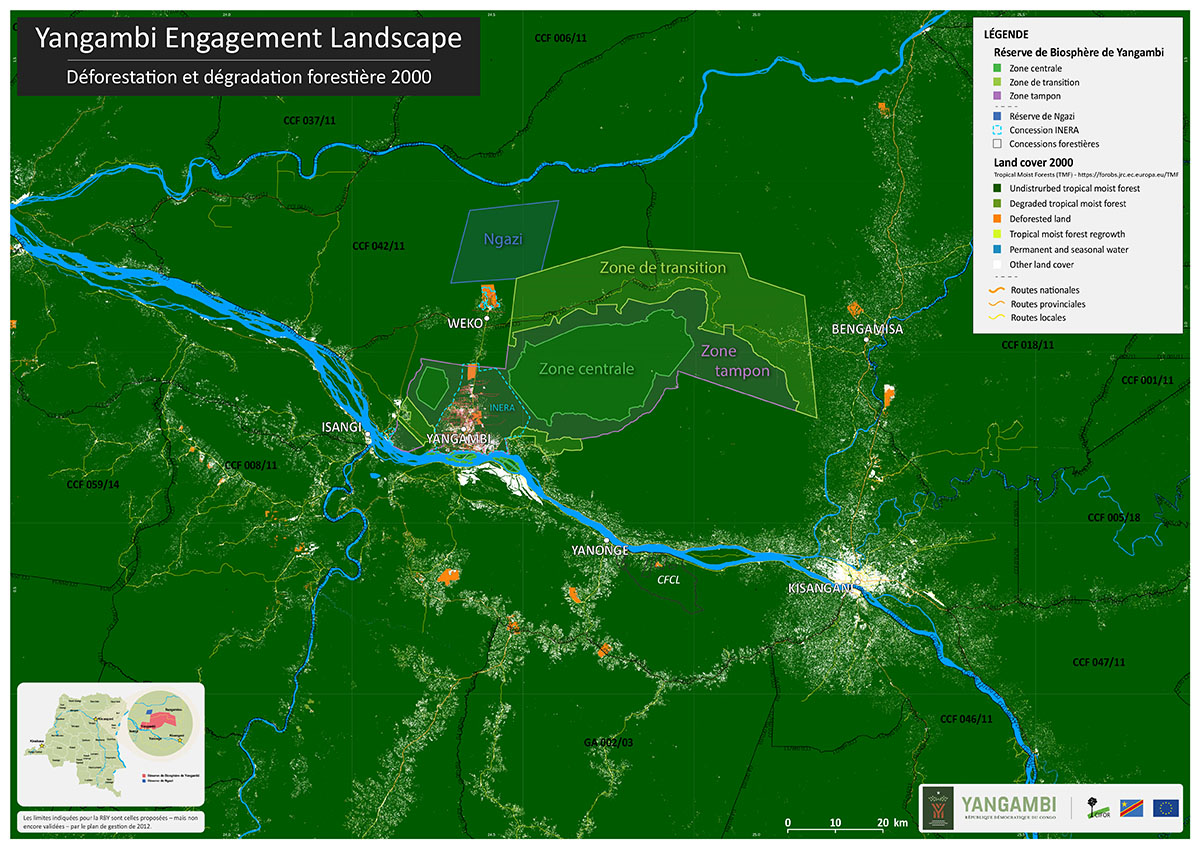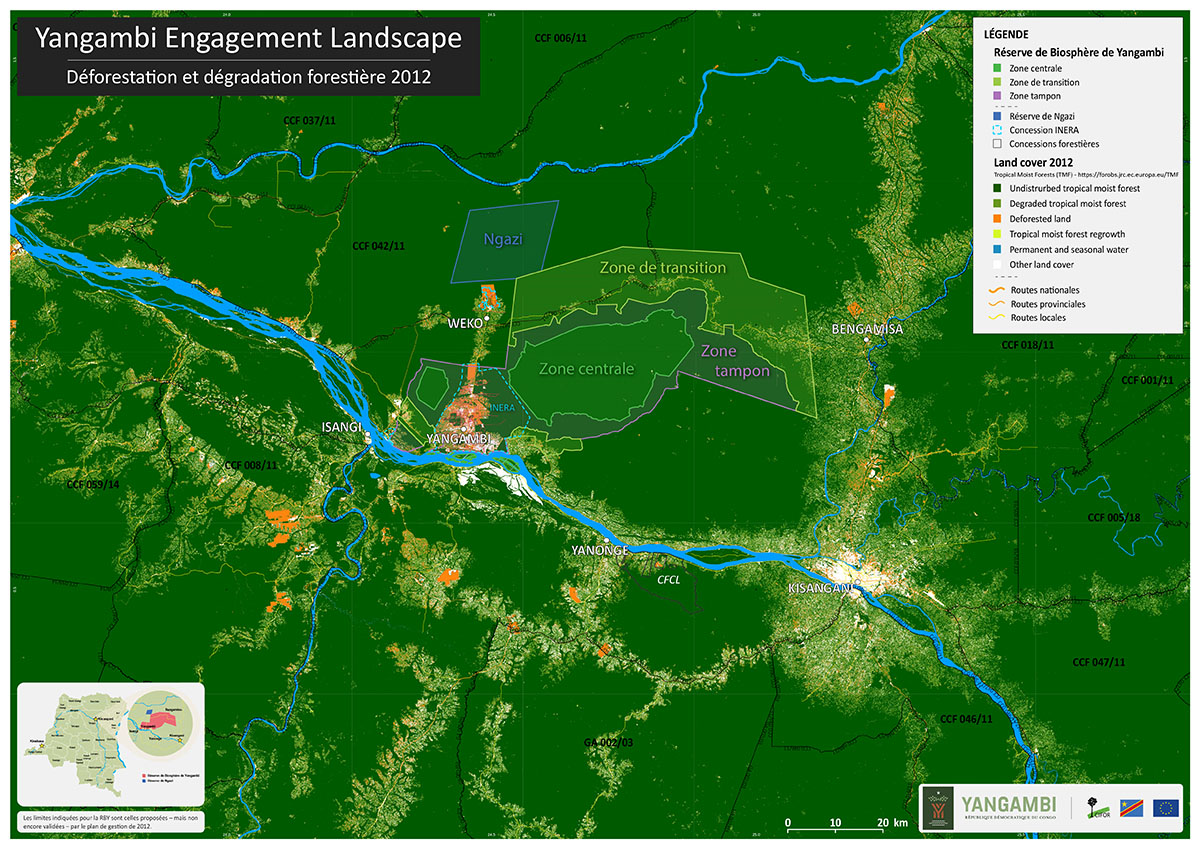
The increased consumption and production of a range of raw material and commodities — so-called “forest-risk commodities” such as palm oil, soy, cocoa, coffee, rubber, timber and beef — contributes significantly to global tropical deforestation and forest degradation.
As both global and domestic demand grows for such commodities, they constitute one of the biggest threats to forests, leading to tree and vegetation removal — often due to burning — biodiversity loss and the release of greenhouse gases into the atmosphere. Frequently, their cultivation through large industrial-scale estates can also pose threats to the livelihoods of Indigenous Peoples and local communities.
How to secure the sustainable production and consumption of such commodities, without impinging on forests, is therefore a key challenge for public and private actors. But acting on commodities and value chains to reduce deforestation is complex because of several factors.
First, value chains can be very long or complex, making the link between production and consumption very distant. Second, the way production chains, logistics and markets are organized make products difficult to trace, making attribution and accountability difficult. Third, how these value chains operate within landscapes is often not controlled either at the value chain or the landscape level. How public and private actors can effectively work together in landscapes and along value chains is key to solving these problems.
Expansion of trade in forest-risk commodities led to increased pressure from civil society organizations, consumers, international banks and shareholders of consumer goods companies to develop and implement a diverse array of instruments and tools to promote sustainable or deforestation-free sourcing, and as a way to reduce their exposure to reputational, financial and regulatory risks. Multi-stakeholder platforms and commodity roundtables also emerged in response to criticisms of government failures.
Researchers at the Center for International Forestry Research (CIFOR), France’s International Cooperation Center in Agricultural Research for Development (CIRAD) and the World Wildlife Fund for Nature (WWF) through the CGIAR Research Program on Forests, Trees and Agroforestry (FTA) have conducted a comprehensive review of initiatives to promote sustainability, including an examination of recent “hybrid” initiatives that involve governments at the national or subnational levels that aim to create a better enabling environment for the private sector.
The multiplication of sustainability initiatives has also been driven by the growing complexity and diversity of conditions under which agri-food and timber supply chains operate. Private sector actors increasingly define and monitor their own sustainability performance by using certification standards or by developing their own procedures and criteria.
More recently, a discernible shift from supply-chain-based or sectoral approaches toward landscape or jurisdictional approaches has been seen as a way to meet sustainability goals. However, the growing complexity of policy regimes results in ambiguities and can lead to trade-offs between gains and losses. The findings of the FTA review suggest that many aspects of complex policy regimes are not yet well understood by policymakers, scientists or the public.
Among the supply-chain based and sector-based approaches, Voluntary Sustainability Standards (VSS), are market-driven mechanisms introduced to ensure that social economic and environmental sustainability issues are addressed in the production, processing and trade of agricultural and forestry commodities.
“Although VSS have been widely adopted, they have come under greater scrutiny in recent years and are often associated with high transaction costs — usually transferred to the end-consumers — the need to meet increasingly complex sustainability and legality standards, the exclusion of smallholders, the frequent lack of any premium for certified products and weaknesses in compliance,” said Andrew Wardell, a principal scientist with CIFOR.
The scientific evidence on the economic, environmental and social outcomes of tropical forest certification is encouraging, although regional differences do occur. Take, for example, the Forest Stewardship Council (FSC), which since the early 1990s has ensured that the chain of custody for production, transformation and sales of timber complies to specific voluntary, third-party audited standards, including covering sustainable forest management and avoiding deforestation, he said.
“There is no doubt that the FSC has achieved a great deal of progress, but it’s not an unqualified success,” said Marie-Gabrielle Piketty, a researcher with CIRAD and a joint author on a review of FSC in Brazil. “Like most sustainability standards, it faces the classic dilemma of balancing stringency needed to ensure the sustainability of FSC-certified forest management, while becoming more inclusive.”
As a result, new public and private commitments have emerged to reduce deforestation and include initiatives based on either sectoral approaches with a focus on supply-side interventions, or mixed supply-chain and territorial approaches at the jurisdictional level. Government-led regulations can guide the private sector to ensure greater third-party accountability and reduce reputational risk.
Similarly, environmental non-governmental organizations (NGOs) are increasingly engaged as intermediaries to help companies address social and environmental risks in the supply chain, and to support sub-national governments in meeting their sustainability commitments.
“We need greater transparency to ensure that companies aren’t just paying lip service to environmental sustainability initiatives, but that they can substantiate claims that deforestation has been reduced,” Wardell said.
To this end, the Accountability Framework initiative (AFi) developed a global disclosure system which aims to stimulate ethical supply chains by tracking progress toward eliminating deforestation and other forms of ecosystem conversion from corporate supply chains.
Uptake and compliance challenges remain and AFi released a baseline for 2020 in an effort to improve disclosure for deforestation-free supply chains.
Some state-led interventions can be effective. For example, the European Union Forest Law Enforcement Governance and Trade action plan (FLEGT), restricts imports of unsustainably produced and illegal timber. The European Commission is currently exploring ways to enforce a Due Diligence based regulation for other forest-risk commodities (Link to CIRAD brief on cocoa). Nevertheless, the New York Declaration on Forests (NYDF), a voluntary public-private commitment to halve deforestation by 2020 will be missed and meeting its 2030 target of ending deforestation will require an unprecedented reduction in the rate of annual forest loss, according to a recent assessment (Link to forestdeclaration.org).
SEEKING SOLUTIONS
Jurisdictional approaches, which align governments, businesses, non-governmental organizations, social organizations and local stakeholders in specific areas around common interests in land-use governance, are now often considered to have the most potential.
They can ensure and provide incentives for sustainability compliance across a whole geographic area, a key issue which value-chains or sector-based approaches fail to address, or often only partially address given the existence of spatial leakage — when some areas in a landscape are not compliant — or sectoral leakage — when some value chains in a landscape are not covered by a sustainability scheme.
Some of these initiatives have been developed around the notion of enhancing regulatory frameworks and enforcement, while others constitute partnerships for improving the uptake of good practices for a specific commodity within wider land-use planning and service provisions schemes. Others involve de-risking schemes for financial actors when they invest in forest-risk landscapes or constitute wider partnerships to advance sustainability at the jurisdictional level.
“Some corporate actors are actively developing place-based solutions not only as a risk management strategy to delink their supply chains from deforestation, but also to benefit from longer term investments in the sustainability of the landscapes or jurisdictions on which their sourcing depends,” said Pablo Pacheco, global forests lead scientist at WWF.
“We shouldn’t focus only on the negative consequences associated with the expansion of forest-risk commodities, but also contribute to the development of a more positive agenda, which supports livelihoods and local people’s rights, protects nature and restores forests in addition to slowing deforestation,” he added.
“Trying to bring together disparate people to achieve common goals isn’t easy because supply chains and jurisdictional governments have different priorities,” Wardell said.
“Several teams – and some through FTA – have started to better highlight some possible impact pathways and shortcomings of jurisdictional approaches, but empirical knowledge remains incomplete,” Piketty said. “Lessons from existing case studies need to be systematized.”
“There’s a clear need to better understand how interactions between state regulations and non-state sustainability initiatives can combine supply chain management and jurisdictional approaches to stimulate wider uptake of improved practices by smallholders,” Wardell said.
“As well, determining how to evaluate impact is a key challenge, due to the many variables that come into play, thus research and science will continue to have an important role to play,” he added.
We want you to share Forests News content, which is licensed under Creative Commons Attribution-NonCommercial-ShareAlike 4.0 International (CC BY-NC-SA 4.0). This means you are free to redistribute our material for non-commercial purposes. All we ask is that you give Forests News appropriate credit and link to the original Forests News content, indicate if changes were made, and distribute your contributions under the same Creative Commons license. You must notify Forests News if you repost, reprint or reuse our materials by contacting forestsnews@cifor-icraf.org.

